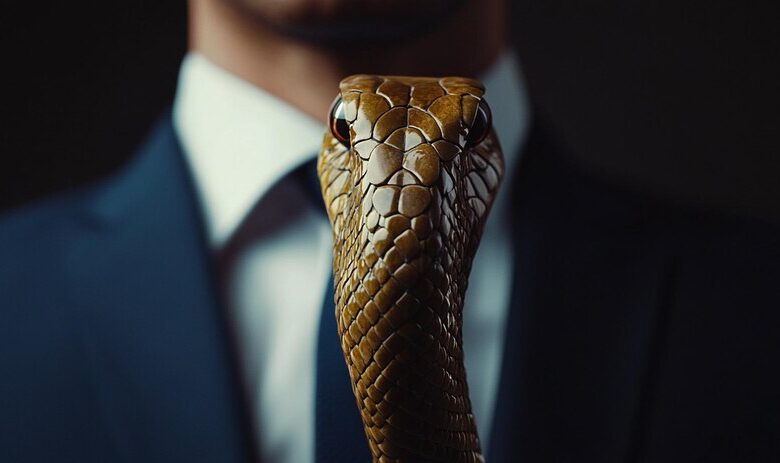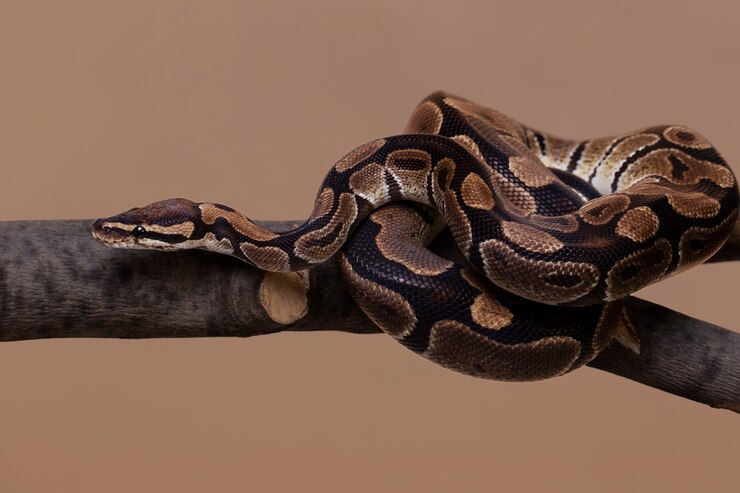The Bowtie Snake: A Unique and Fascinating Species

Introduction
In the diverse world of reptiles, few creatures are as intriguing as the bowtie snake. Often overshadowed by more well-known snakes, this species captivates those who take the time to appreciate its unique characteristics and ecological importance. The bowtie snake is not only a stunning example of nature’s artistry but also plays a vital role in its ecosystem. In this extensive article, we will explore various facets of the bowtie snake, including its physical traits, habitat, behavior, diet, reproduction, conservation status, and cultural significance. By the end, you will have a comprehensive understanding of why this remarkable snake deserves our attention and respect.
Physical Characteristics
The bowtie snake, scientifically known as Dromicus fasciatus, derives its name from the distinctive pattern on its back that resembles a bowtie. This striking design consists of bold, contrasting colors—deep blues, rich greens, and vibrant yellows—that create an eye-catching appearance. The snake’s body is slender, typically reaching lengths of 2 to 4 feet, although some specimens may exceed this range.
The smooth, glossy scales of the bowtie snake reflect light, adding to its allure and enhancing its camouflage. This coloration serves a dual purpose: not only does it make the snake visually appealing, but it also allows it to blend seamlessly into its environment, providing protection from both predators and prey.
Coloration and Patterns
The most striking feature of the bowtie snake is its intricate patterning. The symmetrical markings that mimic a bowtie are not merely aesthetic; they play a significant role in the snake’s survival. These patterns help the snake remain hidden among the leaves and foliage, where it hunts for prey and avoids detection by predators. The combination of color and pattern is a prime example of nature’s ingenuity in evolutionary adaptation.
Size and Shape
Bowtie snakes possess a long, slender shape that facilitates their movement through dense vegetation. This streamlined form allows them to navigate tight spaces, an essential trait for ambush hunting. Their size, combined with their agility, makes them adept at capturing small mammals and amphibians, which constitute a significant portion of their diet.
Habitat
The bowtie snake primarily inhabits the temperate regions of North America, favoring areas with dense vegetation such as forests, wetlands, and grasslands. These habitats provide the perfect balance of cover and accessibility, allowing the snake to hunt effectively while remaining concealed from larger predators.
Preferred Environments
Bowtie snakes thrive in environments that offer plenty of hiding spots, such as thick underbrush, fallen logs, and rocky crevices. They are often found near water sources, which attract a variety of prey, making these areas prime hunting grounds. The availability of suitable habitat is crucial for their survival, as it directly impacts their ability to find food and shelter.
Impact of Habitat Loss
Unfortunately, habitat destruction due to urbanization, agriculture, and climate change poses significant threats to the bowtie snake. As their natural environments are altered or destroyed, these snakes face increasing challenges in finding suitable habitats. Conservation efforts aimed at preserving these ecosystems are vital to ensuring the survival of the bowtie snake and the many other species that share its habitat.
Behavior
Bowtie snakes are primarily diurnal, meaning they are most active during daylight hours. Their behavior is a blend of stealth and agility, reflecting their status as ambush predators. One of the most notable aspects of their hunting technique is their ability to remain motionless for extended periods, blending into their surroundings while waiting for the perfect moment to strike.
Hunting Techniques
When hunting, bowtie snakes rely on a combination of patience and precision. They often select a vantage point where they can observe the movements of potential prey. Using their keen sense of smell and excellent vision, they detect vibrations and scents in their environment, allowing them to identify nearby animals.
Once a target is located, the bowtie snake springs into action. Its rapid striking speed enables it to capture prey quickly, often using constriction to subdue its meal before swallowing it whole. This ambush strategy is effective for capturing agile animals, such as rodents and frogs, which make up a significant portion of their diet.
Defensive Behaviors
In addition to their hunting skills, bowtie snakes have developed a range of defensive behaviors to protect themselves from potential threats. When threatened, a bowtie snake may flatten its body to appear larger or emit a series of hissing sounds to deter predators. In extreme situations, they can release a foul-smelling substance from specialized glands, which acts as a deterrent to would-be attackers.
Despite these defenses, bowtie snakes are still vulnerable to larger birds, mammals, and other reptiles. Their ability to blend into their surroundings is their best defense, as it allows them to avoid detection in the first place.
Diet
The bowtie snake has a varied diet that primarily consists of small mammals, amphibians, and insects. Its hunting strategy is particularly effective for capturing prey that is agile and elusive. This dietary flexibility allows the bowtie snake to thrive in various environments.
Prey Preferences
Bowtie snakes are opportunistic feeders, taking advantage of whatever prey is most readily available. Their diet includes rodents, such as mice and voles, as well as frogs, lizards, and insects. This adaptability in feeding habits is crucial for survival, especially in times when certain prey may be scarce.
Feeding Mechanism
Once a bowtie snake captures its prey, it employs a method of constriction. By coiling around the animal, it suffocates its catch before swallowing it whole. This feeding mechanism is common among snakes and highlights the bowtie snake’s evolutionary adaptations for hunting.
Reproduction
The reproductive behavior of bowtie snakes is both fascinating and complex. Breeding typically occurs in the spring, following the snakes’ emergence from hibernation. Males engage in a series of courtship displays, which may include flicking their tongues and engaging in gentle combat with other males to establish dominance.
Nesting and Egg-Laying
After mating, females lay clutches of 5 to 20 eggs, often burying them in soft soil or leaf litter. This nesting behavior serves to protect the eggs from predators and environmental extremes. The eggs incubate for approximately 60 to 70 days, during which the young snakes develop and grow.
Independence of Hatchlings
Upon hatching, the young snakes emerge fully formed and ready to begin their independent lives. Unlike some species of snakes that exhibit parental care, bowtie snakes do not provide any assistance to their young. Instead, the hatchlings must immediately fend for themselves, relying on their instincts and skills to survive in the wild.
Conservation Status
The conservation status of the bowtie snake is an important topic for ecologists and wildlife enthusiasts alike. While it is not currently classified as endangered, the species faces various threats that could impact its populations in the future.
Threats to Survival
Habitat destruction due to urbanization, agriculture, and climate change poses significant risks to bowtie snake populations. As their natural habitats are altered, these snakes may struggle to find suitable environments for hunting and breeding. Additionally, pollution and the introduction of invasive species can further exacerbate the challenges they face.
Conservation Efforts
To safeguard the future of the bowtie snake, conservation initiatives focused on habitat preservation and restoration are crucial. Public awareness and education play vital roles in these efforts. By promoting understanding and appreciation for the bowtie snake, communities can become advocates for protecting its habitats and the ecosystems they support.
Moreover, creating protected areas and wildlife corridors can help mitigate the impacts of habitat loss. These conservation strategies aim to ensure that bowtie snakes and other wildlife have the necessary resources to thrive.
Cultural Significance
Throughout history, snakes have held various symbolic meanings in different cultures. The bowtie snake, with its striking appearance, has often been associated with transformation, renewal, and even healing. In some Indigenous cultures, snakes are viewed as sacred beings that embody wisdom and change, reflecting the interconnectedness of all living things.

Representation in Art and Literature
The bowtie snake has also become a subject of interest in art and literature. Its distinctive patterns and vibrant colors inspire various forms of creative expression, from paintings to fashion design. This artistic representation helps raise awareness about the species, fostering a deeper connection between people and the natural world.
Additionally, educational programs highlighting the bowtie snake’s unique traits can encourage younger generations to appreciate and respect wildlife. By integrating these themes into art and literature, society can cultivate a greater understanding of biodiversity and the importance of conservation.
Conclusion
The bowtie snake is a remarkable species that exemplifies the intricate balance of nature. Its striking appearance, unique behaviors, and ecological significance highlight the beauty and complexity of our natural world. Understanding the physical characteristics, habitat preferences, hunting techniques, reproductive strategies, and conservation status of the bowtie snake enriches our appreciation of biodiversity.
As we continue to explore the wonders of nature, it is essential to advocate for the protection of species like the bowtie snake. By supporting conservation efforts and raising awareness about the challenges they face, we can ensure that future generations will also marvel at the beauty and uniqueness of this extraordinary reptile. The bowtie snake is not merely a creature of the wild; it is a vital component of our planet’s ecological tapestry, deserving of our respect and protection.





